Top 21 API Testing Tools Everyone Should Know in 2024
Akash Nagpal
Posted On: January 25, 2024
![]() 45210 Views
45210 Views
![]() 24 Min Read
24 Min Read
Everyone scrolls through a news app daily to stay updated with the latest headlines and stories worldwide. But have you ever wondered how news apps effortlessly collect and deliver various news articles to your fingertips?
This is where APIs shine and make it possible to serve millions of requests and provide information to all apps. API acts as an interface through which applications receive the information to be displayed to users.
Since API is the backbone of any application, proper testing of API is crucial. To ensure that the API’s functional and non-functional behavior is as expected, various API testing tools are available in the market. API testing tools ensure that the application remains reliable and your experience is secured. So, API testing tools are essential in ensuring any application’s proper and reliable functioning.
TABLE OF CONTENTS
What is an API?
API, or Application Programming Interface, is a set of protocols, tools, and definitions that enables software components to interact with each other. APIs act as mediators between components, enabling them to share data and functionalities without directly interacting with each other’s internal code.
APIs allow developers to access certain functions or data of a service, library, or platform without understanding the system’s internal workings. APIs can be divided into several categories, first being web APIs — which are used for web development; second being library APIs — which are provided by programming libraries, and lastly, operating system APIs — which allow applications to interact with the underlying operating system.
What is API Testing?
API testing is the practice under the umbrella of software testing that validates an API to meet its specified requirements and functions as intended. It focuses on verifying an application’s programming interfaces’ functionality, reliability, performance, and security.
One crucial aspect of API testing is to ensure compatibility with different environments and scenarios. This includes testing API behavior on different operating systems, browsers and devices to ensure a seamless experience for end users.
Top 21 API Testing Tools in 2024
API testing tools assist in automating the testing process, making it efficient and thorough. These software applications are designed to evaluate and validate the functionality, performance, security, and reliability of Application Programming Interfaces. Each tool has unique strengths and capabilities designed to cater to diverse testing needs. Let’s discuss the advantages and limitations of the popular 21 API testing tools:
Postman

Postman is a leading API development and testing platform that empowers developers to easily build, test, and manage APIs. Its user-friendly interface, comprehensive features, and extensive support make it a popular choice among developers of all skill levels.
Advantages Of Postman
- Enables the creation, administration, and execution of API requests, including GET, POST, PUT, and DELETE.
- Allows the creation and management of collections, enabling users to group requests and share them.
- Offers API monitoring features to track performance, uptime, and response times.
- Creates mock servers to simulate APIs before the actual development, enabling rapid prototyping and testing of API endpoints.
- Integrates with CI/CD pipelines for automated testing, making it a valuable tool for DevOps workflows.
- Supports multiple testing environments, which allow testers to seamlessly switch between different environments, such as development, staging, and production.
- Supports global variables, which enhances API testing capabilities by providing a centralized repository for storing and managing reusable data values.
- Provides tools like Postman Collection format for generating API documentation.
- Postman supports HTTP, HTTPS, REST, GraphQL, WebSocket, OAth, and SOAP for API testing and management.
Limitations of Postman
- Limited Automation Capabilities: Postman’s automation capabilities are limited for complex testing scenarios and may require external tools or plugins for comprehensive automation.
- Lack of Advanced Reporting and Analytics: Postman’s reporting feature lacks advanced data analysis tools. Users may need external tools for comprehensive insights.
Google Apigee
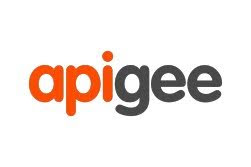
Google Apigee is a complete cross-cloud API management platform equipped with various tools for building, managing, securing, and testing APIs. Its unified testing features empower developers and testers to perform functional, performance, and security assessments of APIs across the development process.
Advantages Of Apigee
- Provides advanced analytics and monitoring tools to track API usage, performance metrics, traffic patterns, and errors for data-driven decisions and optimization.
- Includes robust security features such as OAuth, JWT validation, access control, and threat protection.
- Allows the implementation of traffic management, transformation, mediation, and rate-limiting policies, which helps manage API traffic, transform data formats, mediate interactions between client and server, and control access rates.
- Supports deployment across multiple cloud environments like GCP, AWS, Azure, etc.
- Simplifies the process of building API proxies from the Open API Specification by automating the translation of OAS definitions into functional API proxies.
- Protocols supported: HTTP, HTTPS, SOAP, REST, WebSockets, TCP, and UDP API testing and management protocols.
Limitations Of Apigee
- Limited Support for Data-Driven Testing: Apigee’s built-in testing capabilities primarily focus on functional testing and do not provide extensive support for data-driven testing.
- Limited Performance and Load Testing Capabilities: Apigee’s integrated testing framework is unsuited for performance and load testing.
SoapUI

SoapUI is a leading Open-Source API Testing tool for REST, SOAP, and GraphQL APIs. It is a complete API testing tool that strongly emphasizes user-friendliness for developers and testers. Its intuitive graphical interface allows automation for functional, regression, and load-testing. SoapUI is majorly used for complete RESTful API and SOAP Web Service testing.
Advantages Of SoapUI
- Supports powerful assertion libraries like AssertJ, aiding in creating fluent assertions using Behavior-Driven Development (BDD) style.
- Integrate with CI/CD pipelines for automated testing, making it a valuable tool for DevOps workflows.
- Provides security testing capabilities to identify and mitigate vulnerabilities in APIs.
- Leverages Groovy scripting, empowering users to create highly customized and flexible tests.
- Provides customizable code templates and supports scripting, enabling users to tailor tests to their requirements.
- Generates comprehensive API documentation, including endpoint descriptions, request and response parameters, and error codes.
- Generates comprehensive test reports and analytics, providing insights into test results.
- Supported protocols: REST, SOAP, HTTP, HTTPS, JMS, AMQP, FTP, TCP, SMTP, and more.
Limitations Of SoapUI
- Resource Intensiveness: SoapUI’s resource-intensive nature can lead to performance issues, especially for large-scale projects or high-volume testing.
- Limited Performance Testing Capabilities: While SoapUI offers some performance testing features, such as load and stress testing, it is not as specialized or advanced as dedicated performance testing tools.
Apache JMeter

JMeter is a purely Java-based popular open-source tool that can be used for performance testing to analyze and measure the performance of various services like web services (APIs), databases, network services, etc. Apache JMeter excels in conducting both functional and performance tests for REST and SOAP.
REST is a set of guidelines for designing web services that use URL-identified resources and is typically stateless. SOAP is a protocol for exchanging messages between web services and uses a message-oriented architecture based on XML. JMeter’s strength lies in its capability to simulate a high volume of requests, allowing you to assess API performance across diverse scenarios.
Advantages Of Apache JMeter
- It offers a Command Line Interface (CLI) and a Graphic User Interface (GUI) for test execution.
- Provides multiple assertions and validation tools to verify API responses, ensuring data accuracy and API functionality.
- Allows users to parameterize requests, allowing for dynamic inputs and testing combinations to analyze API behavior in various circumstances.
- Enables data-driven API testing by effectively utilizing CSV files as a test data source.
- Supports per-thread cookies feature that enables every thread (or virtual user) within a test to handle its distinct set of cookies autonomously.
- Supports protocols: HTTP, HTTPS, SOAP, REST, FTP, JDBC, and more.
Limitations Of Apache JMeter
- Limited Real-time Monitoring: Apache JMeter lacks built-in real-time monitoring capabilities, making it challenging to observe and analyze API performance metrics during test execution.
- Difficult Browser Interaction: Apache JMeter is primarily designed for protocol-level testing and does not directly support testing modern single-page applications (SPAs) or web applications that rely heavily on JavaScript and Ajax.
Citrus Framework

Citrus Framework is an open-source for evaluating integration, including API testing, across numerous communication protocols and message formats. Citrus, unlike traditional API testing tools, provides a message-oriented integration strategy that covers messaging systems, databases, and API interfaces.
Advantages Of Citrus Framework
- Allows comprehensive validation of message payloads, headers, endpoints, and XML/JSON structures.
- Allows users to create custom actions, validators, and test components as per specific testing requirements.
- Enables the simulation of messages and system behaviors, facilitating end-to-end testing, for example, checking message payloads, headers, etc.
- Provides functionality for handling dynamic test data and increasing test scenario variability.
- Supports protocols: HTTP, HTTPS, SOAP, REST, JMS, FTP, TCP, and more.
Limitations Of Citrus
- Steep Learning Curve: The Citrus Framework has a steeper learning curve. Its DSL-based syntax and configuration require a deeper understanding of Java concepts and the Citrus Framework’s architecture.
- Limited Test Reporting and Visualization: While the Citrus Framework provides basic reporting capabilities, it lacks advanced test reporting and visualization features compared to dedicated testing platforms.
Karate DSL

Karate framework is an open-source API testing framework built upon the cucumber library. It empowers testers to assess web services by creating tests in a domain-specific language. Developed by Intuit, this tool is tailored for automated API testing, and it doesn’t require programming language proficiency. Karate framework uses Behavior-Driven Development (BDD) syntax and provides a unified API testing, automation, and mocking framework.
Advantages Of Karate DSL
- Utilizes Gherkin syntax, making it easy for testers familiar with Cucumber to transition to Karate DSL.
- Facilitates API mocking and stubbing, which allows testers to simulate backend services or endpoints.
- Integrates seamlessly into CI/CD pipelines for automated testing, making it a valuable tool like Jenkins for DevOps workflows.
- Provides built-in support for handling JSON and XML data formats.
- Integrates seamlessly with Java.
- Supports Multi-threaded parallel execution.
- Protocols supported: HTTP and WebSocket protocols.
Limitations Of Karate DSL
- Limited Data-Driven Testing Capabilities: Karate DSL’s data-driven testing is limited for complex data scenarios and may require specialized tools for comprehensive testing.
- It does not provide IntelliSense support in the Integrated Development Environment system.
RapidAPI

RapidAPI is a cloud-based API testing solution that enables enterprises and developers to create, manage, and execute comprehensive API tests throughout the software development life cycle. Using RapidAPI Testing, users can effortlessly generate complex functional API tests through various methods, including visual, automated, and code-based approaches.
Advantages Of Rapid API
- Includes security and authorization features like OAuth 2.0/OpenID Connect, header validation, and injection flaw prevention for enhanced API security.
- Offers a global monitoring feature that evaluates API tests through reports, and analytics to track the performance and health of their APIs across different locations.
- Protocols supported: HTTP methods, REST, SOAP, GraphQL, WebSocket.
Limitations Of Rapid API
- Limited Test Automation Capabilities: While RapidAPI provides a user-friendly interface for creating and executing API tests manually, its automation capabilities are relatively limited. It lacks advanced features for automated test scheduling, test data management, and continuous integration/continuous delivery (CI/CD) pipelines.
- Limited Performance Testing Capabilities: RapidAPI’s built-in testing framework primarily focuses on functional testing and API validation, but it falls short in performance and load testing.
REST-Assured
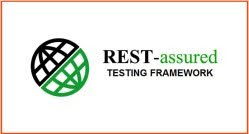
RestAssured is a Java library for API testing, often used for automating REST API testing. It integrates well with Java-based projects. It offers a domain-specific language (DSL) that simplifies writing API tests in Java, making it more readable and intuitive.
Advantages Of Rest Assured
- Provides multiple assertion options to validate API responses against anticipated results, containing complex JSON and XML validations.
- Includes built-in functionalities like Data Format Parsing, mock servers integration, etc., to simplify test creation, execution, and analysis.
- Allows users to easily construct HTTP requests (GET, POST, PUT, DELETE, etc.) and validate API responses.
- Integrates seamlessly with the Serenity automation framework and various Java testing frameworks, such as JUnit and TestNG.
- Supports protocols: HTTP methods, SOAP, AMQP, and WebSocket.
Limitations Of Rest Assured
- Learning Curve: REST Assured is a Java-based library requiring users to know the Java programming language to create and execute tests.
- Rest Assured does not support SOAP APIs explicitly.
BlazeMeter
![]()
BlazeMeter is the leading API testing and monitoring solution in the market. BlazeMeter can rapidly build API tests and begin monitoring your APIs from early development to production. Integrates with open-source and third-party platforms like Jenkins, PagerDuty, and Slack to notify the team when API issues develop.
Advantages Of BlazeMeter
- Aids in running API tests post-deployment and smoothly integrates with tools like GitHub, Slack, and Zapier.
- Integrates seamlessly into CI/CD pipelines for automated testing, making it a valuable tool like Jenkins for DevOps workflows.
- It offers the Sync feature, enabling testers to effortlessly update tests in response to specification changes, eliminating the need for manual test updates when pIt includes or API responses change.
- Offers scalability to handle large-scale tests of virtual users to stress-test APIs.
- Protocols supported: HTTP, HTTPS, SOAP, REST, and more.
Limitations f BlazeMeter
- Learning Curve: Its comprehensive feature set and cloud-based architecture can make it challenging for beginners to learn and navigate the platform effectively.
- Limited Scriptless Testing Capabilities: Its scriptless testing capabilities are less advanced than dedicated scriptless testing frameworks. This can limit its usability for testers who prefer a more drag-and-drop approach for test creation and execution.
Airborne
![]()
Airborne is an API automation testing tool built on the Ruby RSpec framework. Since Airborne is a programming framework, it has no user interface other than a text file in which to write code. Aside from that, Airborne testing comes with a steep learning curve for toolset techniques and certain Ruby and RSpec concepts.
Advantages Of Airborne
- Supports handling JSON and XML data formats for request and response validations.
- Can work with APIs that are written in Rails.
- Provides built-in assertion methods for validating API responses.
- Seamlessly integrates with the RSpec testing framework.
- Protocols supported: HTTP and HTTPS protocols.
Limitations Of Airborne
- Limited Reporting and Visualization Capabilities: Airborne provides basic reporting features but lacks advanced test reporting and visualization capabilities compared to dedicated testing platforms.
- Lack of proper User Interface: Airborne doesn’t have a user interface, unlike other tools. Instead, it only provides the text file where you can write code.
ReadyAPI
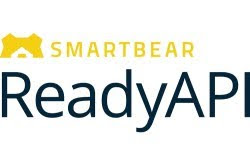
ReadyAPI stands out as a premier solution catering to functional, security, and load testing of a wide array of web API services containing RESTful, SOAP, GraphQL, and more. It combines four robust functionalities within a unified platform: API functional testing, performance testing, security testing, and API and web virtualization. Integrating with your CI/CD pipeline facilitates effortless incorporation into every building process.
Advantages Of ReadyAPI
- Its Smart Assertion feature swiftly generates multiple assertions for numerous endpoints.
- Provides functionalities to conduct security testing, identifying and mitigating potential vulnerabilities in APIs.
- Integrates seamlessly into CI/CD pipelines for automated testing.
- Enables Command-line usage for automated testing.
- Allows parallel execution of functional tests and job queuing.
- Protocols supported: REST, SOAP, GraphQL, HTTP, and HTTPS.
Limitations Of ReadyAPI
- Learning curve with Groovy Scripting: ReadyAPI primarily utilizes Groovy scripting for advanced functions, which is a barrier for users unfamiliar with the language.
- Resource Intensive: Running multiple tests simultaneously or handling large-scale tests might require significant system resources.
Newman(Postman Command-Line Tool)

Newman is the command-line counterpart of the popular API development and testing tool, Postman. It allows users to run Postman collections directly from the command line, facilitating automated API testing and integration into CI/CD pipelines.
Advantages Of Newman
- Enables automated API testing seamlessly integrated into CI/CD workflows.
- Runs Postman collections, including requests, scripts, and assertions, providing a comprehensive API testing solution.
- Allows running collections with different variable sets, supporting versatile testing scenarios.
- The CLI easily incorporates Newman into scripts, batch processes, and automation workflows.
- Provides various output formats for test results, facilitating interpretation and reporting.
- JavaScript scripting within Postman collections allows dynamic data manipulation before sending requests.
- Protocols supported: HTTP and HTTPS.
Limitations of Newman
- Limited GUI Features: Newman is focused on command-line execution and lacks the graphical user interface (GUI) features available in the Postman desktop application.
- Dependency on Postman Collections: Users need well-defined Postman collections to leverage Newman, which might be a limitation if teams are not already using Postman for API development.
Fiddler

Fiddler is a popular tool for debugging web APIs, enabling developers to oversee, scrutinize, and modify HTTP/HTTPS traffic between a device and the web. Its diverse set of capabilities aids in troubleshooting web applications and APIs, establishing it as a valuable tool in the arsenal of developers, testers, and security experts.
Advantages Of Fiddler
- Allows real-time analysis and examination of web traffic that enhances debugging efficiency.
- Enables on-the-fly modifications of requests and responses that facilitate versatile testing scenarios.
- Provides insights into network performance that can be used to identify opportunities for optimization.
- Provides Customization options through scripting and extensions to allow tailored debugging solutions.
- Offers compatibility across multiple operating systems, expanding accessibility for developers.
- Protocols supported: HTTP and HTTPS
Limitations of Fiddler
- SSL Certificate Installation: To intercept HTTPS traffic, Fiddler requires users to install its root certificate, which might raise security concerns in some environments.
- Platform Dependence: While Fiddler is available on multiple platforms now, its core functionalities might not be as robust or as feature-rich on macOS or Linux compared to its native Windows version.
Swagger

Swagger creates open-source utilities for API development that cover all phases of the construction process, spanning planning and design through testing and monitoring. Furthermore, when establishing a web API from scratch, Swagger is crucial in ensuring that your API closely aligns with the protocol.
Advantages of Swagger
- Generates interactive API documentation for easy understanding.
- Enables manual testing and exploration directly through the Swagger UI interface.
- Promotes standardized API design with the OpenAPI Specification.
- Facilitates the generation of client libraries and server stubs for various languages.
- Supports the creation of mock servers based on API documentation for pre-implementation testing.
- Protocols supported: HTTP, HTTPS, and WebSockets.
Limitations of Swagger
- Limited Automated Testing Features: It is primarily designed for manual testing, and users may prefer dedicated tools for comprehensive automated testing due to its limited features in this aspect.
- Security Testing Limitations: It lacks robust support for critical security testing features in dedicated API testing tools, typically including authentication, authorization, and other security assessments.
WireMock

WireMock is a flexible API testing tool that acts as an independent mock server, allowing developers to simulate and evaluate APIs independently of a live backend. It simplifies the generation of tailored responses, dynamic behaviors, and lifelike test scenarios.
Advantages of WireMock
- Operates independently, facilitating API simulation without a live backend.
- Developers can define specific responses for HTTP requests, allowing versatile scenario testing.
- Supports dynamic response creation based on conditions or variables during testing.
- Enables the simulation of scenarios with maintained state across multiple requests for testing complex interactions.
- Robust request matching capabilities ensure accurate triggering of specific responses.
- Can record real HTTP traffic, automating the setup of mock server configurations.
- Configuration and management of stubs are simplified through a RESTful API that ease integration into automated workflows.
- Protocols supported: HTTP and HTTPS.
Limitations of WireMock
- Resource Consumption: WireMock consume resources, especially when handling many concurrent requests or scenarios with intricate configurations.
- Limited Protocol Support: While WireMock excels in HTTP and HTTPS testing, its primary focus is on web protocols.
Apiary
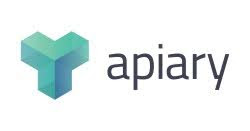
Apiary is an API design and testing tool that simplifies designing, documenting, and testing APIs. It provides a collaborative platform for teams to design APIs using API Blueprint or Swagger, facilitating the entire API development lifecycle.
Advantages of Apiary
- Supports API Blueprint and Swagger for seamless API design and documentation.
- Promotes team collaboration during API design, facilitating real-time feedback and iterative improvements.
- Generates mock servers from API designs, enabling concurrent work between frontend and backend developers.
- Supports direct creation of automated tests from API designs, ensuring adherence to specified design and behavior.
- Tools for managing API versions and documenting changes aid in maintaining backward compatibility and smooth transitions.
- Seamlessly integrates with CI/CD pipelines, allowing automated testing and validation of APIs within the development workflow.
- Protocols supported: HTTP-based APIs.
Limitations of Apiary
- Limited Mock Server Customization: While Apiary generates mock servers for testing, the customization options for these servers might be more limited compared to standalone mock server tools.
- Limited Protocol Support: Apiary primarily focuses on HTTP-based APIs and may not cover various protocols used in systems beyond web APIs.
TestComplete

TestComplete is primarily known for its capabilities in UI and functional testing; it also offers robust API testing capabilities. It supports various protocols, offering versatility in testing different types of APIs.
Advantages of TestComplete
- Adapts to various APIs by supporting multiple protocols, including HTTP, SOAP, and REST.
- With JavaScript, Python, and VBScript, TestComplete offers scripting flexibility for creating intricate API test scenarios.
- Allows API testing without extensive coding due to its keyword-driven testing approach.
- Seamlessly integrate API and UI testing in TestComplete for comprehensive end-to-end testing.
- Supports data-driven API testing, enabling tests with multiple data sets for thorough coverage.
- Ensures API consistency across different browsers with TestComplete’s cross-browser testing capabilities.
- Provides detailed reports and analysis features to track progress and identify issues during API testing.
- Protocols supported: HTTP, HTTPS, and REST.
Limitations of TestComplete
- Resource Intensive: Running complex or large-scale API tests in TestComplete may require significant system resources that impact overall performance.
RestSharp
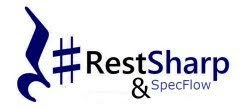
RestSharp is a popular and versatile open-source library for working with RESTful APIs in .NET applications. It simplifies making HTTP requests and handling API responses, making it a valuable tool for API testing and integration within .NET projects.
Advantages of RestSharp
- Simplifies HTTP request creation, streamlining API testing with a user-friendly API.
- Allows customization, response handling, and functionality extension for tailored testing requirements.
- Supports asynchronous programming.
- Customizes requests, including headers, parameters, and authentication, providing control over API test scenarios.
- Simplifies API response deserialization into .NET objects, facilitating convenient data handling.
- Provides usability across various .NET platforms.
- Protocols supported: HTTP, HTTPS, WebSocket, WSS, SOAP, XML-RPC, and much more.
Limitations of RestSharp
- Limited Automation Features: RestSharp lacks built-in features for complete test automation and assertion capabilities in dedicated testing frameworks.
- Dependency on .NET Environment: RestSharp is specifically designed for .NET applications, which means its usage is limited to projects built on the .NET framework.
HTTPie

HTTPie is a command-line utility that facilitates HTTP requests and API interactions. Its uncomplicated and user-friendly interface has gained popularity among developers and testers seeking a straightforward and easily navigable tool for API testing.
Advantages of HTTPie
- Supports JSON format by default, simplifying interactions with RESTful APIs that use JSON for data exchange.
- With its extensible plugin system, users can enhance HTTPie’s functionality by adding custom features or integrating it with other tools.
- Supports session persistence, allowing users to save and reuse request configurations for subsequent API interactions.
- Compatible with Windows, macOS, and Linux.
- Protocols supported: HTTP and HTTPS.
Limitations of HTTPie
- GUI Absence: HTTPie is a command-line tool lacking a graphical user interface, which might be a limitation for users who prefer GUI-based interactions.
- Limited Protocol Support: While excellent for HTTP and HTTPS, HTTPie might not cover the full spectrum of protocols used in specific industries or unique API implementations.
API Fortress
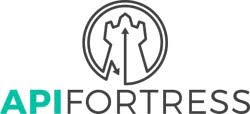
API Fortress is a comprehensive API testing and monitoring platform designed to ensure the reliability and performance of APIs. It offers a range of features for creating, executing, and analyzing API tests, making it a valuable tool for development and quality assurance teams.
Advantages of API Fortress
- Facilitates collaborative test design that allows teams to create and maintain API tests.
- Users can create API tests visually using a drag-and-drop interface.
- Supports end-to-end testing including integrations with third-party services and databases.
- Enables dynamic data handling, which is crucial for testing scenarios where input data changes dynamically.
- Provides monitoring and analytics features for tracking API performance and identifying issues.
- Includes security testing capabilities, helping identify vulnerabilities in API endpoints.
- Integration with continuous integration/continuous deployment (CI/CD) pipelines allows seamless incorporation of API tests into the development workflow.
- Protocols supported: HTTP/HTTPS, SOAP, REST, GraphQL.
Limitations of API Fortress
- Complexity for Simple Tests: The tool’s extensive features may be overkill for simple API testing scenarios, potentially adding complexity where it’s not needed.
- Limited Free Tier: The availability of a free tier is limited, which might restrict access for smaller projects or individual developers.
Tricentis Tosca

Tricentis Tosca is a comprehensive test automation platform that extends its capabilities beyond UI testing to include API testing. It offers a model-based approach, allowing users to efficiently create, execute, and manage API tests.
Advantages of Tricentis Tosca
- Works on a model-based testing approach by modeling the application and its APIs.
- Supports end-to-end test automation, covering both UI and API layers.
- Promotes the reuse of test assets to maintain and update tests as the application or APIs become complex.
- Executes API tests across different browsers and devices.
- Seamless integration with continuous integration and continuous deployment (CI/CD) pipelines.
- Supports parallel test execution for faster feedback and optimization of testing timelines.
- Protocols supported: HTTP, REST, SOAP, and more.
Limitations of Tricentis Tosca
- Complexity for Simple Scenarios: Tosca’s extensive capabilities may be overkill for simple API testing scenarios, potentially adding complexity where it’s not needed.
- Dependency on Tosca Infrastructure: As a proprietary tool, Tosca tests depend on the Tosca infrastructure, and users may encounter limitations when integrating with other tools or environments.
How Do You Choose The Right API Testing Tool?
With many tools available, each with unique features and capabilities, selecting the most suitable tool requires careful consideration of various factors. Here are some key aspects to consider when deciding:
- Testing Needs and Requirements: Clearly define your specific API testing needs and requirements.
- Supported Protocols and Formats: Ensure the tool supports the protocols and formats used by your APIs, such as REST, SOAP, GraphQL, and JSON.
- Functional, Performance, and Security Testing: Prefer an all-in-one tool that can perform all API testing rather than maintaining different tools for different functionalities.
- User Interface and Learning Curve: Consider the tool’s user interface and ease of use. Consider the learning curve, documentation, and support resources available.
- Integration with CI/CD Pipelines: If you use CI/CD pipelines, ensure the tool integrates seamlessly with your existing workflow.
- Scalability and Performance: Consider the tool’s capacity to manage the volume and complexity of the APIs.
- Reporting and Analytics: Examine the degree of detail, visualization choices, and exporting reports for additional investigation.
Conclusion
In software development, maintaining an edge in API testing is essential. These top 21 API testing tools offer many features, ensuring you can effectively address your API testing needs. Whether functional, performance, security, or behavior-driven testing, these tools provide the power and flexibility needed to thrive in the constantly evolving API landscape. Select the tool best fits your project requirements and elevate your API testing capabilities.
Frequently Asked Questions (FAQs)
What are the benefits of adopting automated API testing instead of manual testing?
Automated API testing offers several advantages over manual testing, including increased efficiency, enhanced test coverage, improved consistency and reliability, streamlined integration with CI/CD pipelines, reduced testing costs, real-time monitoring, data-driven insights, scalability, improved documentation, and enhanced user experience.
What role do API testing tools play in software security?
API testing tools aid in identifying vulnerabilities such as incorrect input validation, authentication difficulties, and possible security risks, resulting in improved software security measures.
Got Questions? Drop them on LambdaTest Community. Visit now













